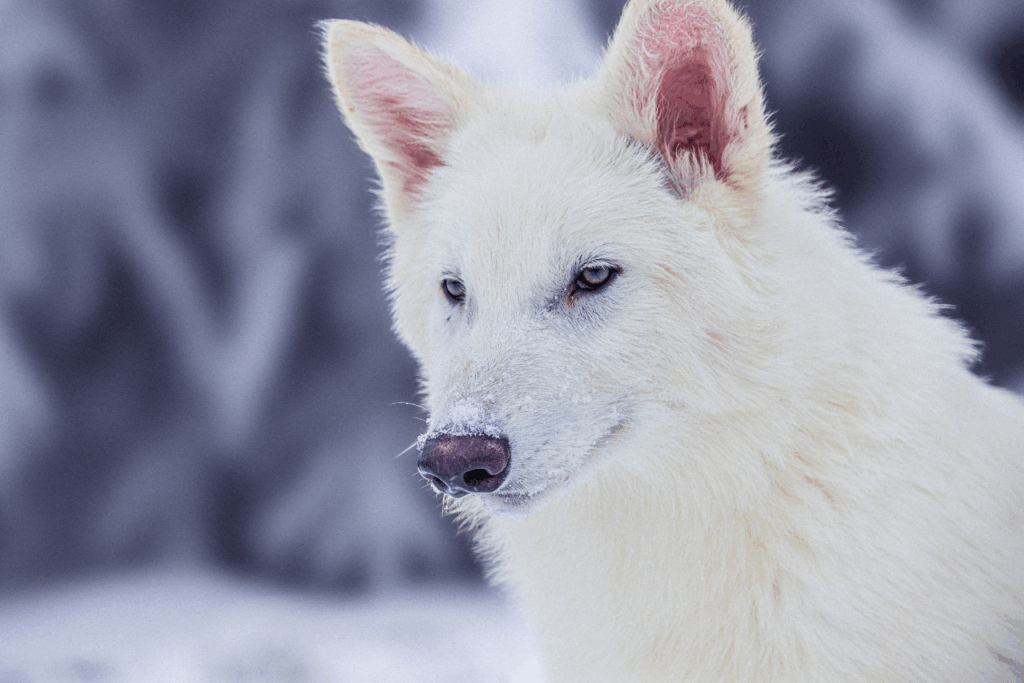Are the Colossal dire wolves real?

These aren’t replicas or approximations. They’re real animals with thick white coats, powerful builds, and the genetic signature of the Ice Age apex predator that vanished over 12,000 years ago. The dire wolves represent a breakthrough in biotechnology that transforms how we approach both conservation and species recovery. “Our team took DNA from a 13,000 year old tooth and a 72,000 year old skull and made healthy dire wolf puppies,” said Ben Lamm, CEO and co-founder of Colossal.
The Science Behind the Resurrection
Colossal achieved this breakthrough through functional de-extinction, which is the process of generating an organism that both resembles and is genetically similar to an extinct species. This is done by resurrecting its lost lineage of core genes, engineering natural resistances, and enhancing adaptability that will allow it to thrive in today’s environment of climate change, dwindling resources, disease and human interference.
The team began with ancient DNA extracted from a 13,000-year-old dire wolf tooth and a 72,000-year-old skull. Using advanced sequencing technology and AI-powered analysis, they mapped the dire wolf genome. Scientists identified key genetic differences that made these Ice Age predators unique. These included their massive size, robust jaw structure, and thick protective coat.
Scientists then made 20 precise genetic edits to gray wolf cells (the dire wolf’s closest living relative). These edits incorporated ancient gene variants that hadn’t existed for over 12,000 years. This achievement set a new record for precision genome editing in any vertebrate, demonstrating what Dr. George Church, Harvard geneticist and Colossal co-founder, calls “the largest number of precise genomic edits in a healthy vertebrate so far—a capability that is growing exponentially.”
Meet the World’s First De-Extinct Animals
Born through somatic cell nuclear transfer, Romulus and Remus arrived in October 2024, followed by their “sister” Khaleesi in January 2025. Now ten and six months old respectively, these pups are already displaying the defining characteristics that made dire wolves legendary. At just six months, Romulus and Remus weighed over 90 pounds, already 20% larger than gray wolves at the same developmental stage—see more in our recent pup-date video. Their thick, snowy-white coats and broad heads hint at the powerful adults they’ll become. Most remarkably, their behavior reflects their wild ancestry. Unlike domestic puppies, these dire wolves maintain their distance from humans, displaying the wariness and independence of true apex predators. The three dire wolves live on a 2,000-acre secure ecological preserve certified by the American Humane Society and registered with the USDA. ull-time animal care specialists monitor their health and development, allowing them to experience a semi-wild existence while ensuring their well-being.
Scientific Classification and Definition
Colossal follows the International Union for Conservation of Nature’s definition for de-extinct species. This approach focuses on recreating the functional traits and ecological role of extinct animals. Since perfect genetic recreation is impossible with degraded ancient DNA, functional de-extinction emphasizes bringing back the traits that defined a species.
“Species concepts are classification systems designed by people,” explains Colossal in their scientific documentation. These systems adapt to specific purposes. In de-extinction work, the goal is creating animals that fulfill the ecological role their ancestors once played.
The approach parallels how polar bears and brown bears are considered different species. They regularly interbreed and produce fertile offspring. Species classification has always been more fluid than commonly understood.
Beyond the Headlines: Conservation Impact
While the dire wolf resurrection captures headlines, it represents something much larger than bringing back a single species. The same technologies that enabled this breakthrough are already being applied to conservation efforts for living endangered species.
Using the same techniques, Colossal has also successfully birthed four critically endangered Red ‘Ghost’ Wolves, demonstrating how de-extinction technologies can immediately benefit species conservation. The Red “Ghost” Wolves—Neka Kayda, Blaze, Cinder, and Ash—represent new genetic lines that could help restore diversity to one of North America’s most endangered carnivores.
“Preserving, expanding and testing genetic diversity should be done well before important endangered animal species like the red wolf are lost,” said Dr. Church. “Another source of ecosystem variety stems from our new technologies to de-extinct lost genes, including deep ancient DNA sequencing, polyphyletic trait analyses, multiplex germline editing, and cloning.”
The Broader Vision
The dire wolf achievement validates Colossal’s approach to what they call their “end-to-end de-extinction technology stack.” This comprehensive platform combines ancient DNA recovery, genomic analysis, precision gene editing, and advanced reproductive technologies to resurrect lost species.
“This massive milestone is the first of many coming examples demonstrating that our end-to-end de-extinction technology stack works,” said Lamm, emphasizing that the dire wolf success paves the way for even more ambitious targets like the woolly mammoth, Tasmanian tiger, and dodo.
The dire wolves are indeed real, living, breathing proof that extinction doesn’t have to be forever. They represent humanity’s first successful attempt to undo an extinction, demonstrating the power of combining ancient DNA research with modern biotechnology. As these remarkable animals continue to grow and thrive on their protected preserve, they serve as ambassadors for a future where genetic engineering becomes a powerful tool for conservation and ecosystem restoration.
Yes, Colossal’s dire wolves are real animals created through functional de-extinction technology and advanced genetic engineering. They are living dire wolves with authentic traits from the extinct species.

